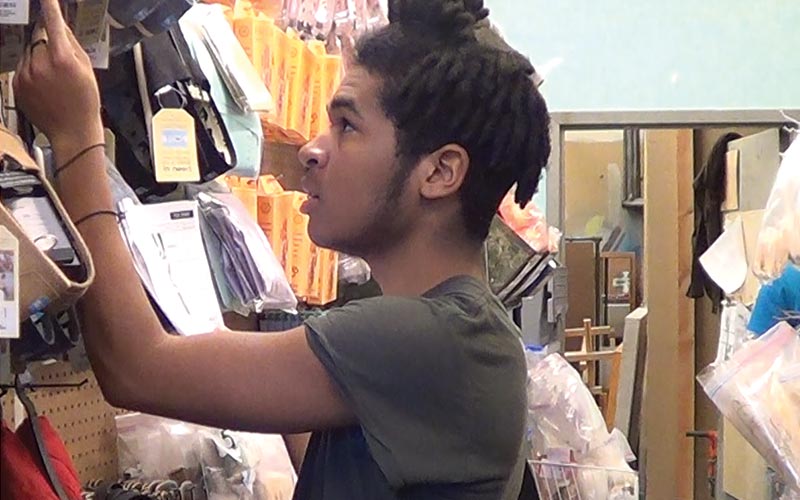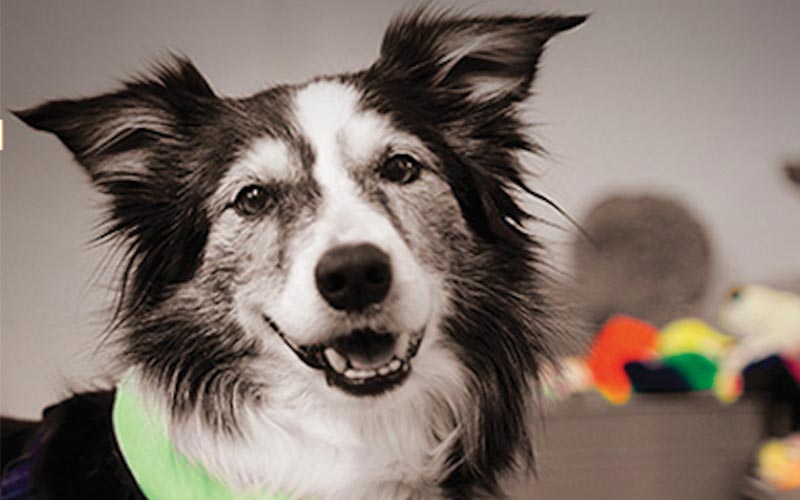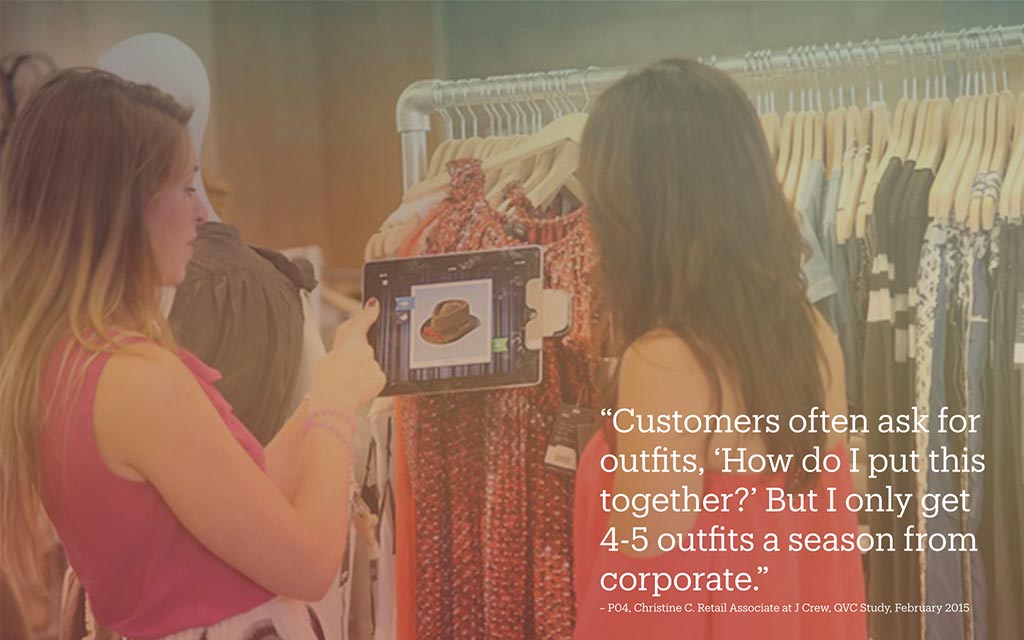
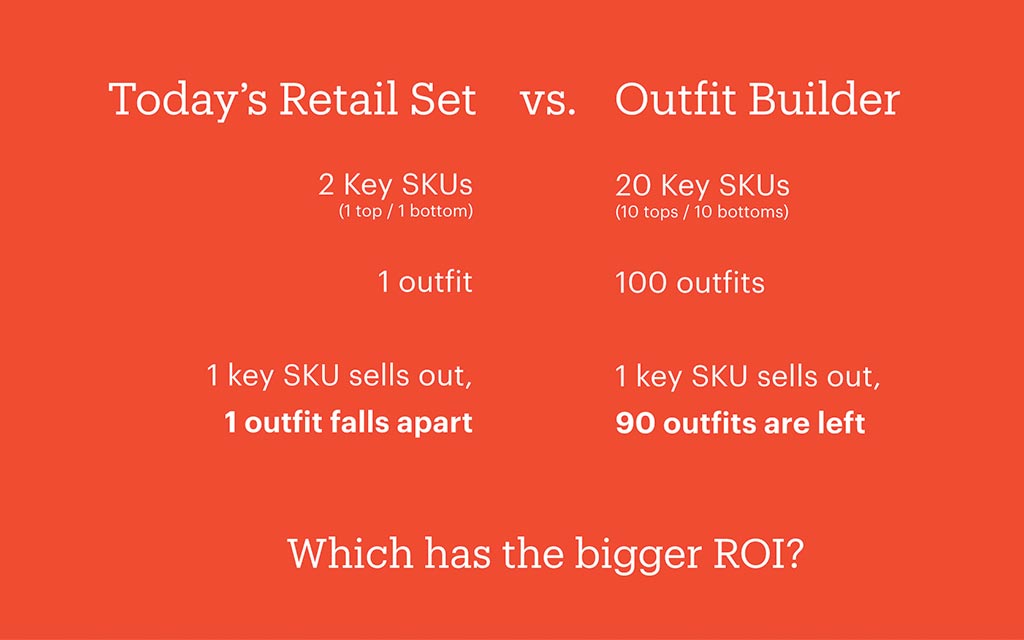
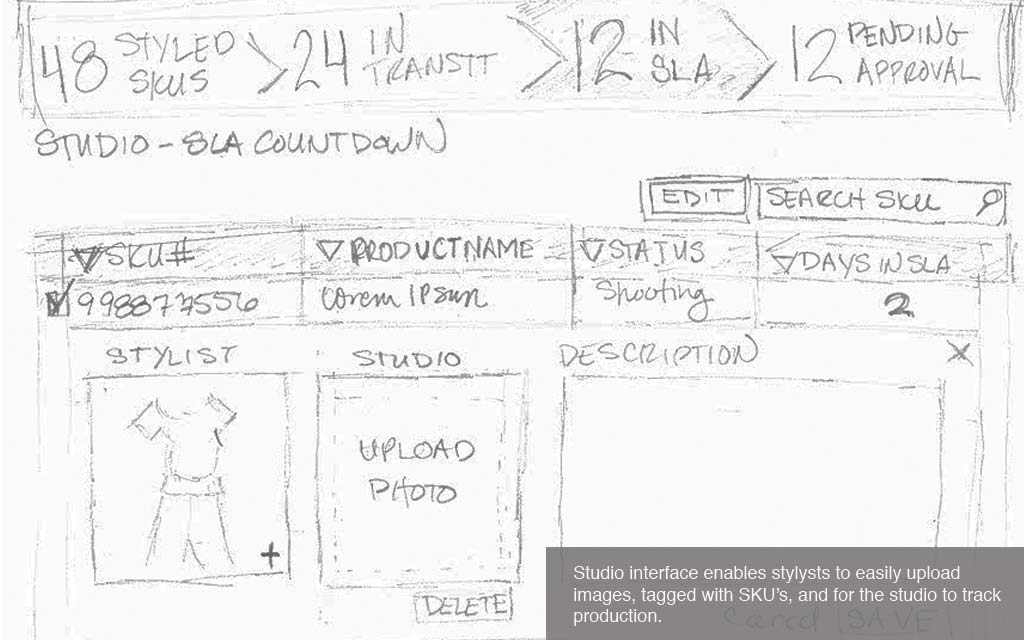
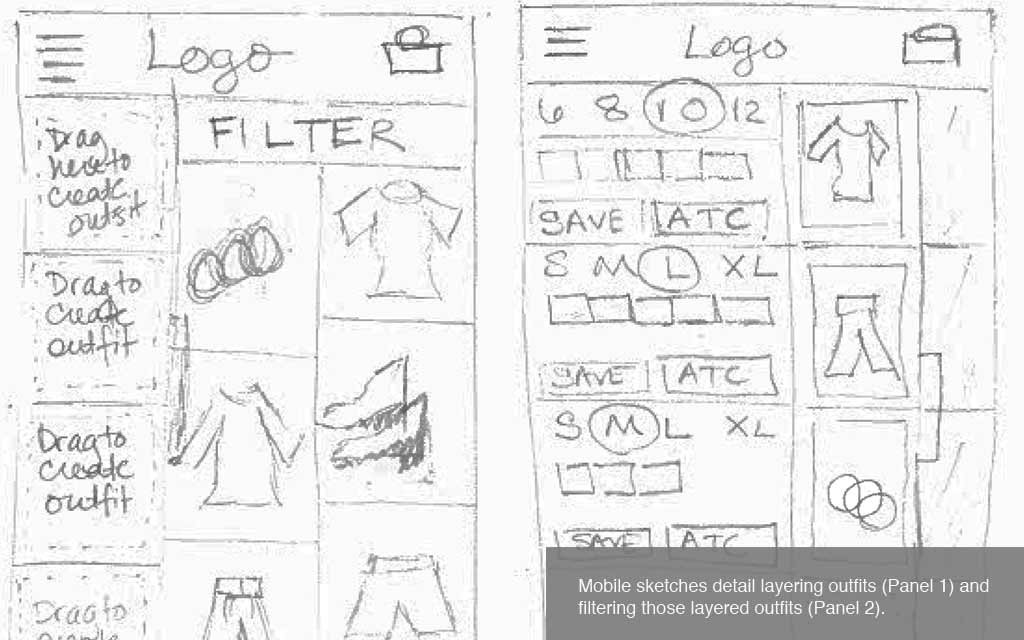
Design Thinking in Action
Stage 1: Empathy
Empathy. This lays the foundation for Customer Driven Innovation (CDI). Empathy in this project looked like listening to:
- A store associate lament about how she wished she had more outfits to show her customers, but only had four outfits to showcase that came from corporate. In spite of this customers repeatedly asked for recommendations.
- A 16 year old browses a retail site and sighs saying, "I don't like when I'm shown a full outfit; I'd rather put it together on my own."
- A studio stylist shows me the collections brand stylists assemble, on a pdf document that she prints out. For assembling outfits for shoots, she has no way to connect which SKU goes with which item in the images. She guesses.
“I don't like when I'm shown a full outfit; I'd rather put it together on my own.”
– P01 Emily, Retail Study
Stage 2: Define
Stitching these ideas together, researching outfitting trends, concepts are born. A new landscape, that harnesses and blends the styles curated by the brand stylist, organically put together by customers, to deliver recommendations the store associate can offer to her customers in store. It's a win-win-win.
Stage 3: Ideation
Concepts are brainstormed, sketched, and presented for feedback. The medium of sketch is intentional: meant to invite collaboration for the shaping of the product. Less refined, it is easier to take apart, easier to put back together in new and better ways. A meeting is called for, to involve more designers, to crack open this puzzle, dream big, and craft solutions together.
Stage 4: Build & Test
Clarified and refined, the design is tested first as a paper prototype, then as a richer, interactive prototype. Users recruited, give feedback. Enhancements are made. Products are born.
Strategic Insight: Rather than products ideated in a boardroom, CDI puts the user front and center throughout the whole process. The result: richer, more meaningful products. Rooted in the user's needs, the product's development has a sharper, keener focus. The cone of uncertainty is narrowed, and teams' are better stewarded. More…
PROJECT DETAIL
- Process: Contextual Inquiry + Prototyping
- Skills: Product Research, UX Architecture
